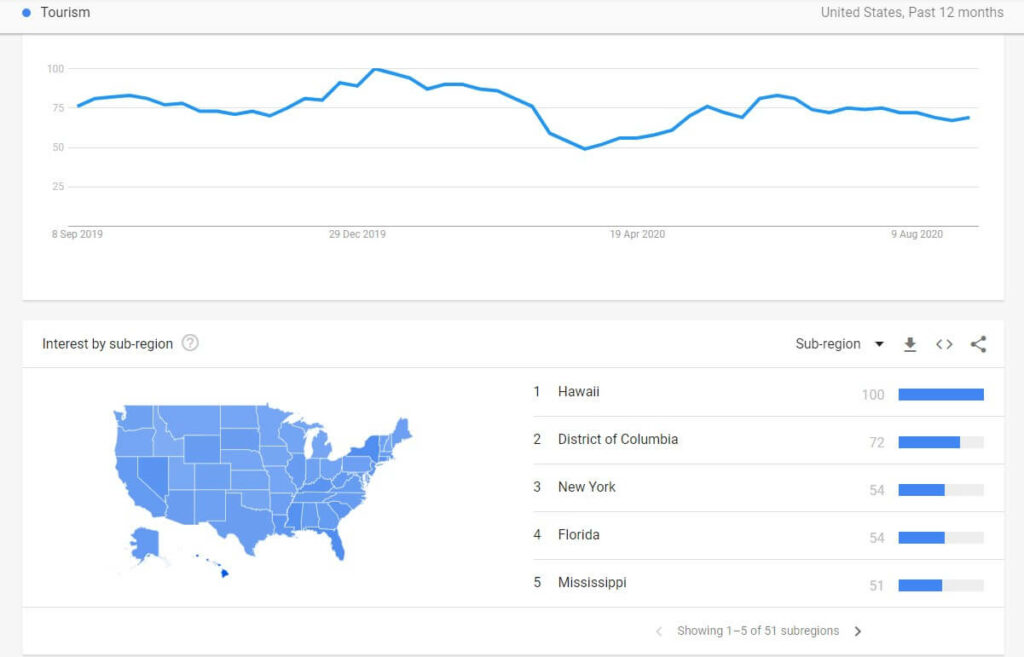Using Someone Else’s Content
Copying someone else’s work is one of the worst content marketing beginner mistakes.
It’s not only illegal, but also decreases your chances to rank high on Google, as the search engine considers the uniqueness of website content when evaluating it. Visitors might also notice that such a blog post has already been published on another resource, thus decreasing your credibility.
The only right method is to create unique and valuable content. This approach is naturally more expensive and time-consuming, but also more efficient in the long term.
If you still want to refer to materials from another resource, make sure to link to its author and add quotes.
Misinforming the Audience
What could be even worse than stealing content? Misinforming your audience. The moment your readers start noticing invalid data or unreliable sources of information, it won’t be long before they move on to another blog.
Make sure to double check all your facts, refer only to trustworthy sources, and publish only credible information.
Poor Timing
Poor timing is one of the common content marketing mistakes. While some topics are evergreen and attract attention consistently throughout the year, others vary in popularity. Try to think about what kind of material will be interesting to your readers at every moment in time and deliver that content accordingly.
Take into account the current market situation, the latest trends and news, seasonality, fluctuations in demand, and so on.
While preparing an editorial plan, use Google Trends or a similar service to find relevant topics.

Not Tracking Performance
Another mistake is to not analyze your audience’s response to the content you deliver. What kind of blog posts get more likes and shares and which get fewer?
By tracking this data, you will soon develop efficient content marketing strategies, which will help you spend more time creating content that really matters to your readers and avoid topics that don’t generate any interest.
The best solution is to schedule an audit every month (or at least every quarter). This allows you to adjust your editorial plan according to your readers’ preferences.
Not Converting Leads
It isn’t enough to generate quality content, you also need to know how to convert the leads that your content produces. This means filling your texts with the right calls to action and having enough of a workforce to handle the leads afterward to make money with affiliate marketing.
So, what can you do? First, make sure you naturally integrate your affiliate links, tools, and call to action buttons into the relevant content. For example, if you write about traveling around France, add links to popular French sights and tourist attractions within your advertisements. Thus, readers who are interested will be more likely to click.
Second, use subscriptions and contact forms to collect emails for your marketing campaign. Make sure to stay in touch with your readers by sending newsletters with the best deals, updates, news, and so on.
Not Knowing Your Audience
The content you deliver should be relevant for your target audience and, for that, you need to understand who your readers are. Here are some tips:
- Analyze your audience’s feedback to your content, check which posts bring in more likes and shares, and find out what questions your readers ask.
- Respond to comments and ask questions in return.
- Run surveys.
- Connect your blog to Google Analytics and explore your audience’s characteristics, such as gender, age, geolocation, and so on.
- Create a user persona who’ll represent your average reader.
The better you know your audience, the more effectively you can create content. So, at this point, it should be very clear that copying ideas for articles from your competitors isn’t always a good idea. Your content must be adopted for your audience.
Not Setting Goals
Creating content without a particular goal in mind won’t bring you anywhere. In general, your content should help customers build awareness, explore possibilities, or make a decision, which are the three stages of a client’s path. That is, they first realize that there is an issue, search for a way out of the situation and, finally, choose the most convenient solution.
Set a goal before creating a new blog post. For example, posts that build awareness and help readers explore possibilities should not be overly promotional. However, it makes sense to add calls to action into articles in which you are describing a particular destination or product.
Not Providing Value
Another mistake would be to create content only for search engines and not for your readers. Google now takes user’s behavior on websites into account. So, to increase your rank, publish posts that not only take place on your blog, but bring value to your audience. The value concerns the relevance of your topics and the recommendations that you provide.
Being Overly Promotional
Posts that sell too hard might irritate your readers and do more harm than good. Make sure that each post brings value depending on its purpose, whether they describe a situation or offer solutions. Next, carefully integrate your call to action and promotion tools in relevant places. For example, compare the advantages of your product against those of your competitors or make a price comparison table. This way, your customers won’t feel that you are trying to force them to make a purchase.
Not Testing Content Formats
If you keep the same content format all the time, your audience may quickly become bored. To keep their interest and attract new readers, test different types of content and see what works best. Here are some ideas:
- Infographics are visually appealing and perfectly help deliver the results of research or other statistics and explain complex matters to your readers.
- Videos are a great way to introduce a product or company to your audience. They also keep visitors on your website longer.
- Webinars allow you to interact with the audience, ask and answer questions, and promote your product.
- Case studies help show how your business can solve your customer’s problems with real examples.
- How-to guides attract readers looking for detailed instructions, who are ready to follow your advice. Feel free to give recommendations.
- Memes and GIFs entertain the audience and draw their attention.
- Social posts allow you to reach out to users who are active on social media and interact with them.
Make sure to track the performance of your content and focus on formats that bring you the best results.
Tools will help you to improve the quality of your content. To edit photos and videos for Instagram, you can use InstaSize. With this free online photo editing tool, you can add filters, adjustments, text, frames, and effects.
Ignoring SEO
Without optimization, even high-quality content may get lost among the thousands of similar materials on the web. SEO is crucial for securing a high position in the search results and directing traffic to your website. Make sure to:
- Add keywords matching users queries
- Place backlinks to your post on third-party platforms
- Build internal links
- Place your post within three clicks of your homepage
Expecting Quick Results
One of the biggest mistakes in content marketing is expecting quick results and giving up too soon. Content marketing is a long-term strategy with a cumulative effect. Some marketers say that it takes around eight to ten months for a blog post to rank. Take this into account when planning your content.
Think long-term. Make an editorial calendar and plan your content in advance. Analyze the performance of existing materials and try different formats.
Not Updating Old Content
Leaving your old posts unattended is another common mistake in content marketing. Updating your existing posts, on the other hand, will help increase relevance and drive more traffic. Here are more reasons to keep your posts up to date:
- Readers tend to click on the most recently published content in the search results
- Things change fast, so there is always a chance that some parts of your content need to be updated to remain accurate
- Give your audience another chance to discover your posts
Learn how to find the articles you need to update and how to properly optimize your content for SEO to appeal to Google’s algorithms (and find your site at the very top of Google’s search results). Watch the recording of our webinar with Laura Peters, entitled “SEO Tutorial for Travel Bloggers: Get More Traffic From Old Blog Posts”, or its recap.
Not Promoting Content
It’s not enough to know how to create content, you also need to be able to promote it well. There are plenty of tools that serve this purpose:
- Social Media: Share new posts on your social networks and get feedback from your audience. What are the most common social media content marketing mistakes? Not interacting with your audience and not using relevant promotional techniques for each network, such as hashtags for Instagram.
- Newsletters: Send out a newsletter every time there is a new post on your blog. This will help loyal readers not miss your updates.
- Networking: Partner with niche experts to run cross promotions or develop joint projects, which are a great way to increase your outreach.
Incorrect Publishing Frequency
While content publishing frequency isn’t the most important ranking factor, it’s still important for content marketing. A mistake would be to publish irregularly or too often/rarely. In the first case, visitors won’t know when to come back for new posts and, in the second scenario, visitors will either be tired of constant updates or won’t be receiving enough information.
The right frequency depends on your business size and goals. It’s better to combine different types of content and distribute them during the month. For example, publish a long read and a few short posts each week and share industry news on a daily basis.
Avoid These Common Content Marketing Mistakes
Familiarizing yourself with the top content marketing mistakes can help you develop a successful marketing strategy. By avoiding these 15 common mistakes, you’ll get ahead of many competitors, improve your ranking on Google and grow your online presence considerably. Make sure to check this list of mistakes every once in a while and adjust your strategy accordingly.




